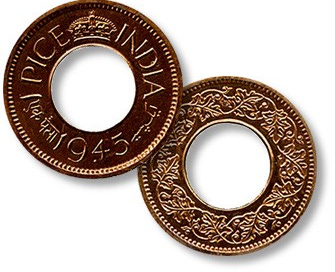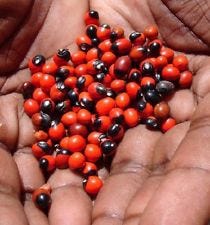The Story of the “Naya Paisa”
“Tujhe to main ek naya paisa nahi doonga!” (I won’t give you a single naya paisa). Perhaps you’ve imagined a shiny new 1p coin, straight from the mint, when someone in a movie somewhere said naya paisa. I know I used to. But that’s not what it really meant. To understand the naya paisa, we must go back to a time before 1957.
In the early days of independent India, indeed even before that, all the way back until 1853, India used a currency system quite different from what we have today. The remnants from that system, though, still colour our language. Back then, the Rupee was sub-divided into 16 annas (and hence the saying — “16 आने सच”). The anna was further divided into 4 paisé (making for 64 paisé to the rupee) which in turn was divided into 3 pies. The pie (पाई) was thus the smallest unit of money and was thus the subject of the phrase “पाई पाई का हिसाब लूँगा”. The equivalent today of course being “एक एक पैसे का हिसाब लूँगा”.
I have often wondered why they had such a cumbersome system, but my hunch is that a system of division by 4s and 16s can be quite convenient — especially when it is mostly used from transactions of physical goods. Division of physical goods (and even weights) into halves and fourths is much easier than dividing them into 10 equal parts. It is also probably the reason why vegetable shops in India will still sell and quote prices for the “paav” (quarter kilogram) rather than 100 gms*. In such a case, a currency which also divides neatly into halves and fourths is very convenient. Of course, this was only until the time when you could actually buy anything for under 1 rupee.
Anyhow, getting back to the Naya Paisa. On 1st April, 1957, the Indian currency system was decimalized — that is to say that the anna and pie were done away with and the rupee was divided into 100 paisé (instead of 64 previously). To make sure that there was no confusion between this new paisa and the old one, it was called the naya paisa (new paisa). This new decimalization also meant that 25 naya paisa was equivalent to 4 annas from the old system and 50 naya paisa was equivalent to 8 annas (hence the words चवन्नी and अठन्नी for these coins).
In 1964, after about 7 years of using the term naya paisa, the naya was dropped and it simply became the paisa — quite literally no longer being naya or new.
While on the subject of weights, I thought it worth mentioning the ratti (रत्ती). “रत्ती भर भी मेहनत नहीं करता” or similar phrases are commonly used. The ratti here is a very small measure of weight — technically equal to 16 grains of rice. Incidentally, it is a weight still used by jewelers for precious stones.




